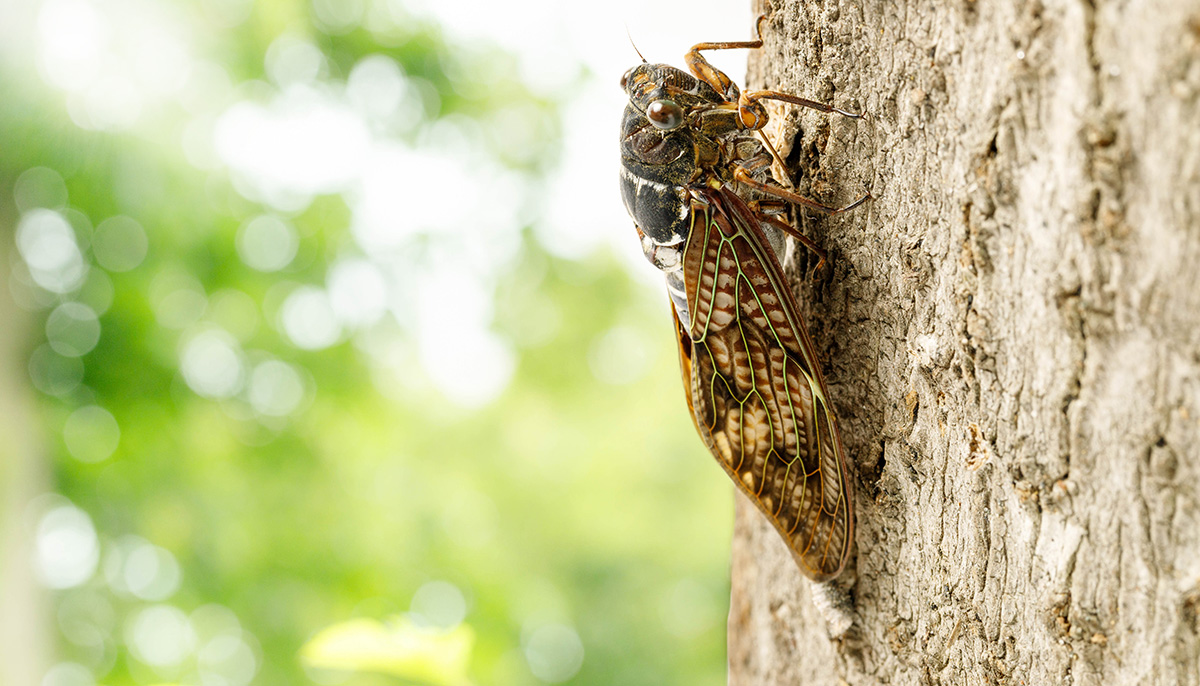Shutterstock
Apparently the world isn’t strange enough with the coronavirus making rounds – and who can forget the murder hornets? But this time, the new threat is “zombie cicadas.” Yes, we said zombie cicadas.
Researchers discovered these cicadas in West Virginia. A parasitic fungus has brutally infected the cicadas. The fungus not only controls their mind, but also forces them to infect other insects. We’ll explain how.

The zombie cicadas are under the influence of a psychedelic fungus called Massospora. This fungus contains chemicals like those found in hallucinogenic mushrooms. This is according to a new study published by PLOS Pathogens.
The fungus results in “a disturbing display of B-horror movie proportions” after infecting its host, said West Virginia University in a press release.
The way the spores attack is that they first eat away at the cicada’s genitals, and then the butt and abdomen. These areas are replaced with fungal spores that are used to transmit the fungus to other cicadas. And then, their new abdomen will slowly “wear away like an eraser on a pencil,” said the study’s co-author, Brian Lovett.
Matthew Kasson, another co-author, said, “If one of our limbs were taken out or if our stomach was slashed open, we would probably be incapacitated. But infected cicadas, despite the fact that a third of their body has fallen off, continue to go about their activities like mating and flying as if nothing happened. This is really, really unique for insect-killing fungi.”
Related: Murder Hornets Have Landed – How North America is Unprepared
Believe it or not, this is actually the third population of infected cicadas researchers have discovered in West Virginia. Cicadas have either a 13 or 17-year lifecycle. They spend most of their life underground. As a result, it can be hard to study how Massospora infects the species.
Researchers believe that sexual transmission is the easiest way to spread the fungus. However, the cicadas can become infected in other ways too.
“When they fly around or walk on branches, they spread spores that way too,” said Matthew Kasson, the study co-author. “We call them flying saltshakers of death. Because they basically spread the fungus the way salt would come out of a shaker that’s tipped upside down.”
Thankfully, the cicadas are not a danger to humans. So, don’t worry about reaching out to human resources management about a zombie-cicada lockdown. Thank goodness. Also, researchers believe that the fungus does not pose a danger to the overall cicada population.
Related: Experts Warn Zombie Deer Disease Could Jump to Humans